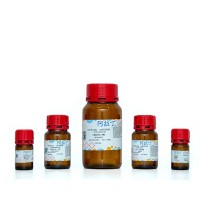Bioluminescence imaging is a powerful technique that allows for deep-tissue analysis in living, intact organisms. However, in vivo optical imaging is compounded by difficulties due to light scattering and absorption. While light scattering is relatively difficult to overcome and compensate, light absorption by biological tissue is strongly dependent upon wavelength. For example, light absorption by mammalian tissue is highest in the blue-yellow part of the visible energy spectrum. Many natural bioluminescent molecules emit photonic energy in this range, thus in vivo optical detection of these molecules is primarily limited by absorption. This has driven efforts for probe development aimed to enhance photonic emission of red light that is absorbed much less by mammalian tissue using either direct genetic manipulation, and/or resonance energy transfer methods. Here we describe a recently identified alternative approach termed Fluorescence by Unbound Excitation from Luminescence (FUEL), where bioluminescent molecules are able to induce a fluorescent response from fluorescent nanoparticles through an epifluorescence mechanism, thereby significantly increasing both the total number of detectable photons as well as the number of red photons produced.






